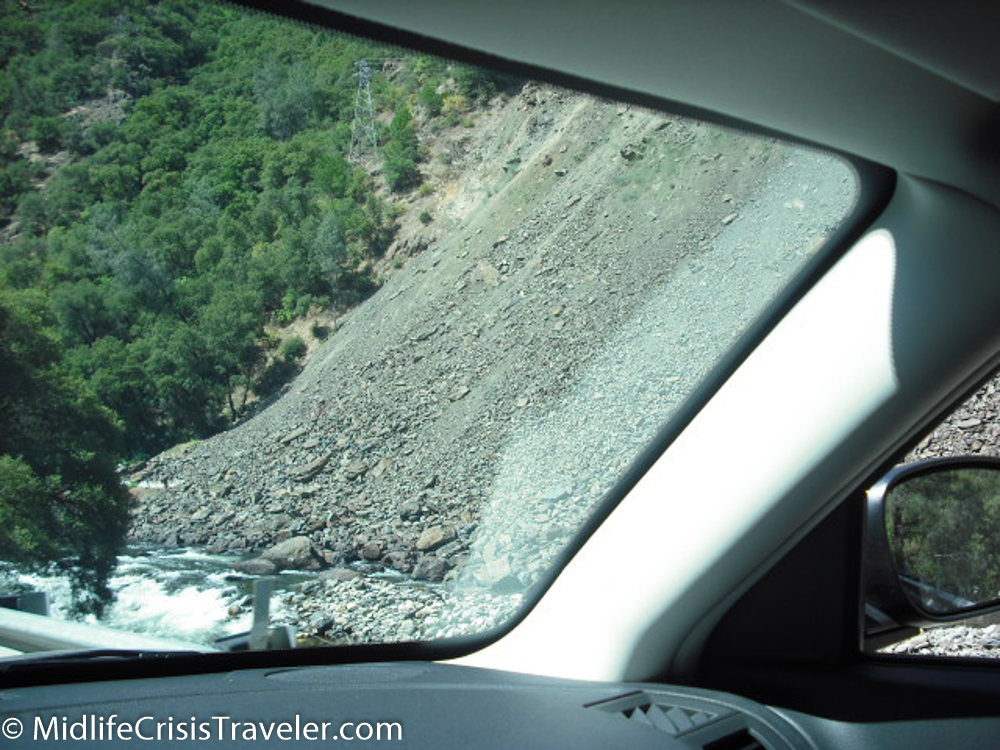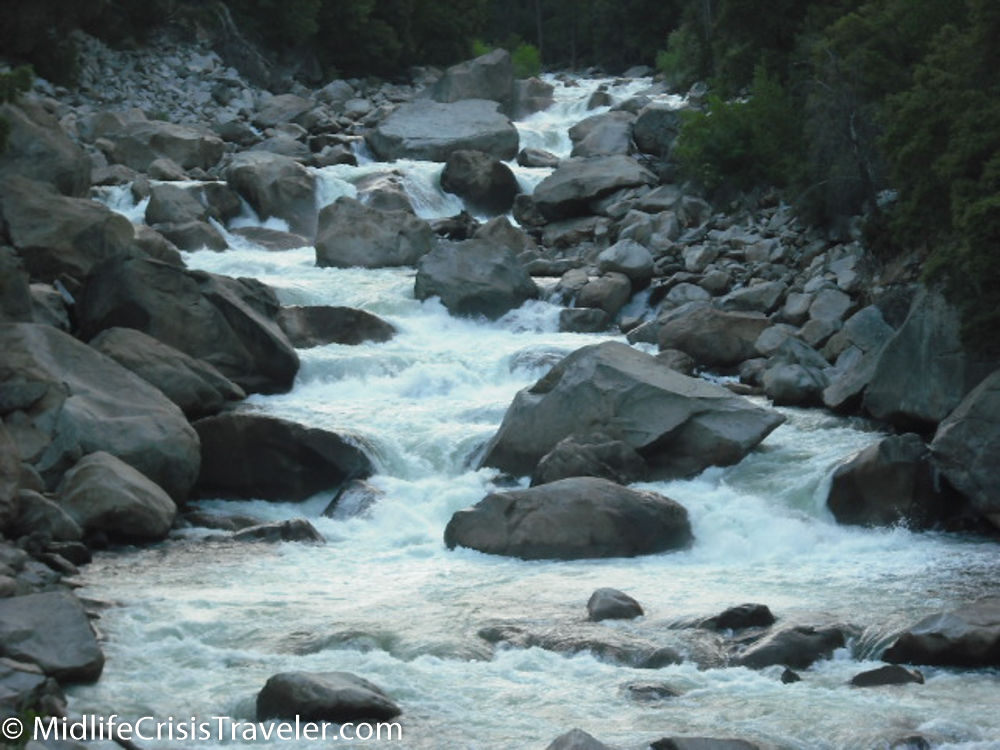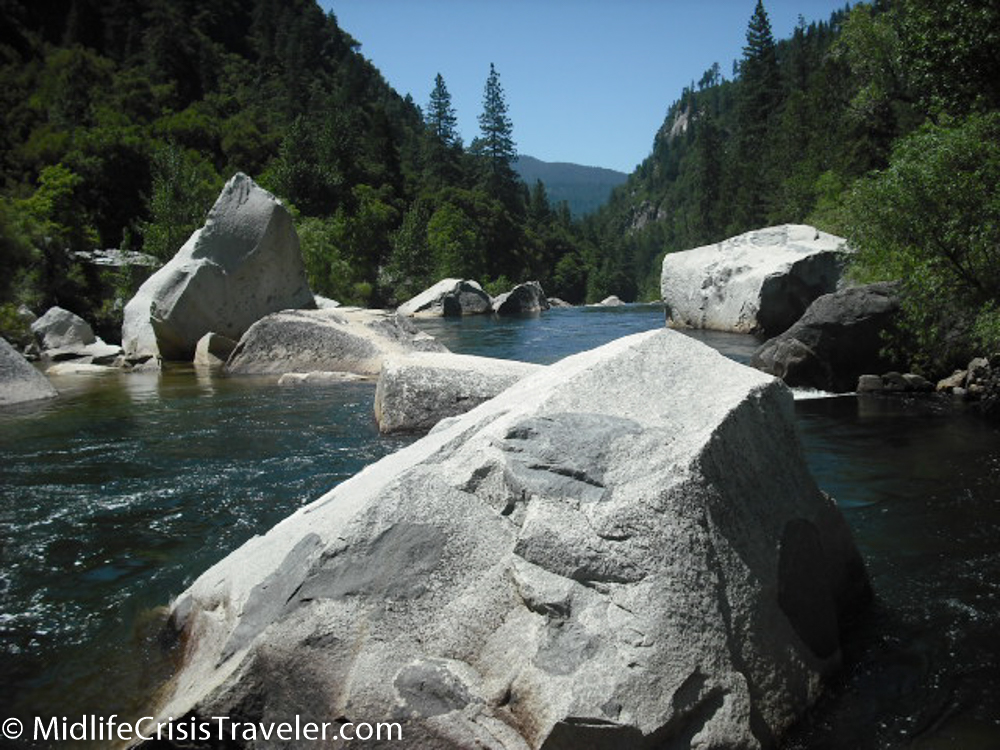Please be patient, it may take a minute for the videos to load.
Whenever someone asks me where they should stay when visiting Yosemite National Park, I never hesitate. There’s a small town down Route 140 about 40 miles from Yosemite Valley called Mariposa. It has about 2000 residents who make their livelihoods from park visitors with several lodging choices and a couple of taverns. The drive up Route 140 sets the tone for what you are about to experience in the park. The road hugs the Merced River and provides a relaxing view of mountains, water and vegetation. In one section, you must take a one-lane bridge across the river because part of the eastern road was destroyed after a rock slide (see pictures below).
The rockslide destroyed the road on the right side of the river.
As you get closer to the park, the rapids get more treacherous. In many areas, swimming, boating, wading and fishing are prohibited. The water is so rough, fast and unforgiving that you would suffer serious injury or death if you fell.
The upper Merced River in many parts of Yosemite National Park is much calmer and slow moving. The water is so clean and clear from the snow melt that you can see the color of the stones at the bottom.
The first major waterfall you encounter when entering the park is Bridalveil Falls. It is on your right as you drive into Yosemite Valley and is a short walk from the parking area. You can walk right up to the falls and be sprayed with its mist which can be refreshing on a hot summer day.
Tenaya Lake is a very popular locale to rest and relax. The surrounding mountains feed the lake and provide a peaceful space for humans and wildlife.
Yosemite Falls is the crown jewel of waterfalls in the park. At 2,425 feet, it drops in three sections, the bottom of which can be accessed by foot. The roar of the falls can be heard in the surrounding meadows when the flow is strong. The flow can dwindle in the late summer and into the fall season.
Water can appear out of anywhere in the park, especially in the later spring and early summer. As the snow rapidly melts, waterfalls form and may run for months before drying up just before winter visits again. Such is the case with Ribbon Falls, which is a couple of miles down the road from Yosemite Falls. It is longer than the upper Yosemite Falls drop but has a much narrower flow of water.
The beauty of the larger waterfalls cannot be matched but the simplicity of some of the smaller roadside waterfalls and lake tributaries beautify all areas of the park. Keeping your eyes peeled is a necessity to capture the full scope of how water cleanses and breathes life into Yosemite National Park.
Do you have a favorite waterfall, lake, body of water? Where is it located? Why is it your favorite?
For more information about Yosemite National Park, click on the link below.



























